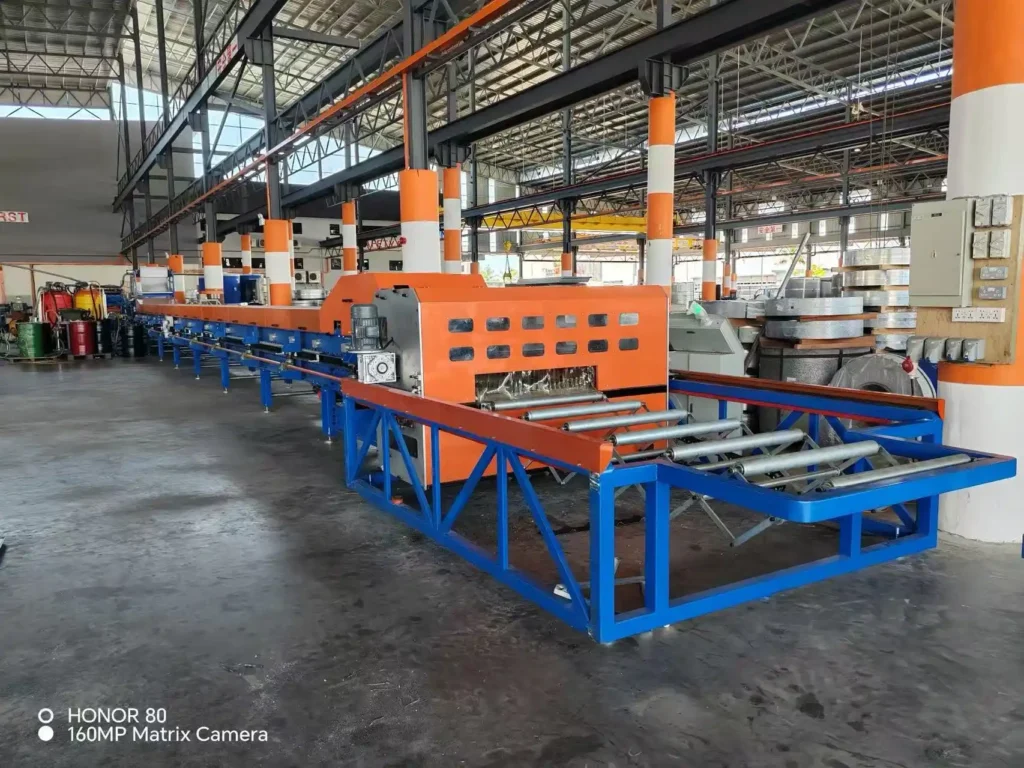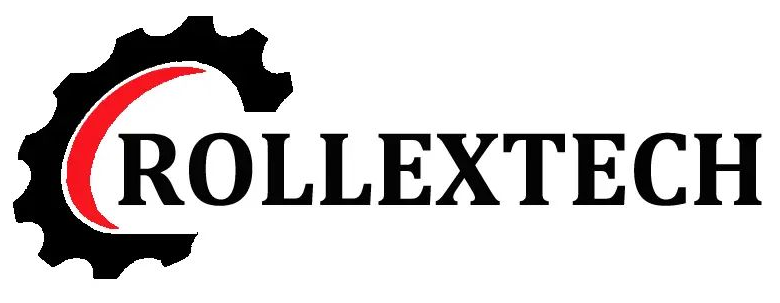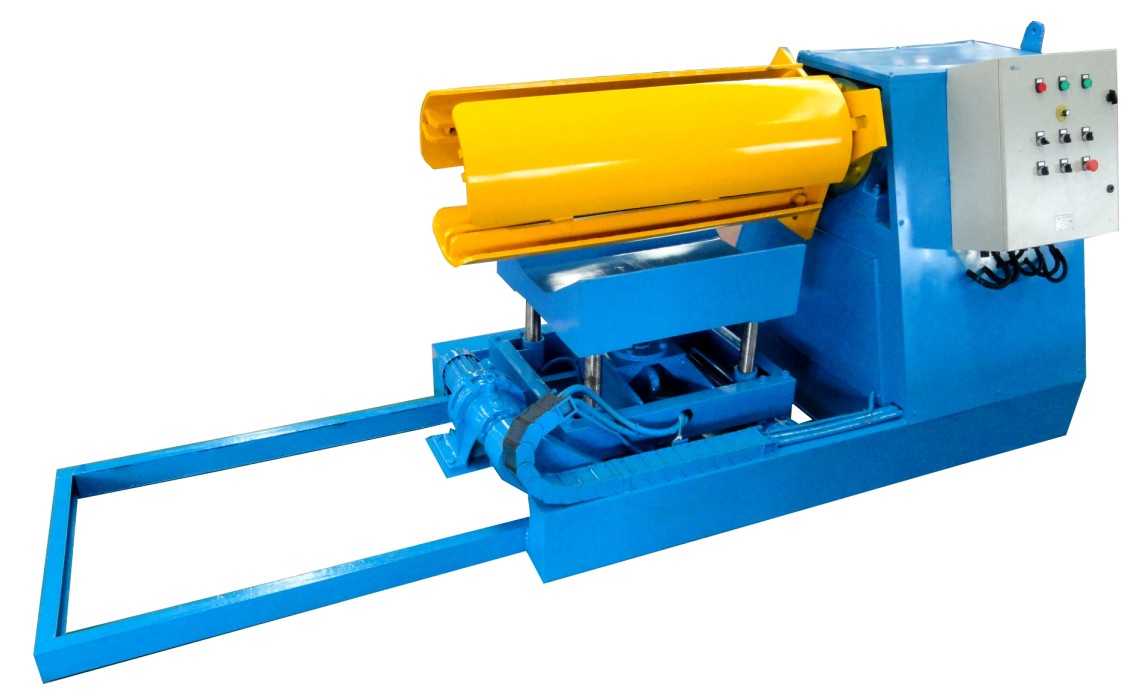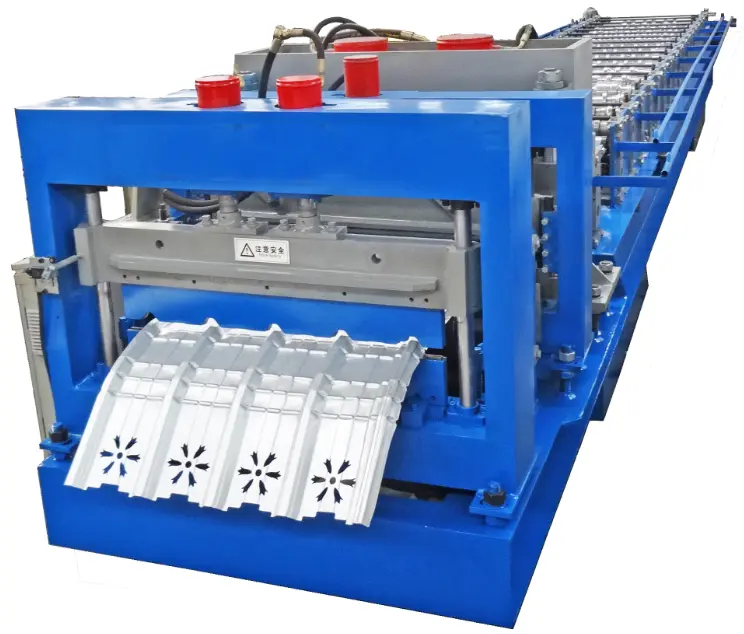
In the construction and manufacturing industries, the demand for lightweight, durable, and energy-efficient materials has led 에 the widespread use 의 sandwich panels. These panels, known for their excellent thermal insulation and structural strength, are produced through specialized machinery known as sandwich panel machines. This 블로그 explores the key components, workflow, benefits, and trends associated with sandwich panel machines. Whether you’re a manufacturer looking 에 upgrade your production line 또는 someone exploring this technology for the first time, understanding these machines can significantly improve your production efficiency and 제품 quality.
What is a Sandwich Panel?
A sandwich panel is a type 의 composite building material consisting 의 two layers 의 high-strength metal sheets (usually steel 또는 aluminum) bonded 에 an insulating core material in the middle. This “sandwich” structure combines lightweight design, excellent strength, thermal insulation, and durability.
It offers structural efficiency—such as superior tensile and compressive strength from the dual metal layers, while the lightweight core reduces overall weight without sacrificing load-bearing capacity—making it suitable for wide-span roofs, wall cladding, and modular buildings.
Sandwich panels also provide outstanding thermal insulation (the core effectively blocks heat transfer, reducing energy consumption), enhanced fire resistance and safety (some core materials like rock wool are fire-resistant and improve the building’s fire rating), and ease 의 installation (modular design enables quick and efficient assembly).
샌드위치 패널 머신이란 무엇인가요?
A 샌드위치 패널 기계 is a specialized mechanical system designed for the automated production of sandwich panels, which are composite building materials composed of two metal face sheets bonded to a core insulation layer. This machine integrates advanced manufacturing processes, including continuous roll-forming, laminating (compounding the core material with the metal sheets), and precision cutting, enabling high-efficiency, large-scale production. Among the various types, the PU Sandwich Panel Machine is a prominent example, focusing on the production of panels with a polyurethane (PU) foam core. This machine ensures consistent quality, rapid output, and adaptability to different panel specifications, meeting the demands of modern construction projects for lightweight, energy-efficient, and durable building materials.
Components and Workflow
Components
- 먹이기 and Discharge System
Responsible for automatically feeding metal panels and discharging finished products, reducing manual intervention and improving production efficiency. - Roll 형성 System
Through multiple sets 의 continuous rollers, the metal panels are gradually pressed into the desired shapes (such as corrugated 또는 flat), ensuring structural strength and dimensional accuracy. - Glue Coating System (for PU and other core materials)
Uniformly applies polyurethane (PU) 또는 other adhesives 에 the metal panel surface 에 ensure strong bonding between the core material and the panel. - Insulation Core Material 먹이기 Device
Automatically feeds core materials such as polyurethane foam 또는 rock wool 에 the composite station, supporting flexible adjustments 의 core thickness and density. - Composite Pressing Device
Uses hydraulic 또는 mechanical pressure 에 tightly bond the formed metal panel with the core material, creating a high-strength composite structure. - Automatic Cutting System
Precisely cuts the composite panels according 에 preset dimensions (e.g., length, angle) 에 meet diverse engineering needs. - Control System (PLC Touch Automation)
Integrates PLC (Programmable Logic Controller) and touch screen for full-process automation control, parameter adjustment, and fault diagnosis.
Production Workflow
- 먹이기 의 Metal Panels
그리고 feeding and discharge system transports the metal panels (such as color-coated steel plates 또는 aluminum plates) 에 the roll forming station. - 형성
그리고 roll forming system continuously presses the metal panels into the desired wave 또는 flat shape. - Core Material Filling/Composite
그리고 insulation core material feeding device fills the formed panels with core materials (e.g., PU foam), while the glue coating system simultaneously applies adhesive. - Pressing
그리고 composite pressing device applies pressure 에 ensure the core material is tightly bonded 에 the panel, eliminating any gaps. - Curing
Core materials such as PU undergo chemical curing (e.g., foam reaction) under pressure 에 form a stable composite structure. - Cutting and Shaping
그리고 automatic cutting system cuts the panels 에 the required length 또는 shape according 에 the order, completing the 제품 discharge.
Note:
- Modular Design:
Each system can be independently debugged 또는 operated in conjunction, adapting 에 the production needs 의 different types 의 sandwich panels. - Energy-efficient and High-performance:
그리고 PLC control system optimizes process parameters, reducing material waste and energy consumption, improving capacity, and ensuring consistent 제품 quality.
혜택 의 Using a Sandwich Panel 머신
High-efficiency Production – Time- and Labor-saving
A sandwich panel machine enables a fully automated, continuous production process—from metal panel forming 에 core material compounding and cutting—all seamlessly integrated. Compared 에 traditional manual 또는 semi-automated methods, this equipment significantly shortens production cycles, operates efficiently around the clock, boosts output, and reduces both labor intensity and time costs.
High-precision Manufacturing – Stable and Reliable Quality
With precision roll forming and automated control systems, the machine ensures accurate control over panel dimensions, uniform thickness, and flat surfaces. This guarantees consistent physical properties and appearance quality 의 each sandwich panel, making it ideal for industries with strict precision requirements such as construction, cold chain logistics, and cleanroom engineering.
Reduced Labor Costs – Improved Economic 혜택
그리고 highly automated production process drastically reduces reliance on manual labor. Only a few operators are needed for equipment monitoring and maintenance, cutting labor costs and minimizing quality fluctuations 또는 delays caused by human error—ultimately improving overall operational efficiency and profitability.
Strong Versatility – Meeting Diverse Needs
그리고 machine allows for quick mold changes and process parameter adjustments, enabling flexible production 의 sandwich panels with various thicknesses (e.g., 50–200 mm), 사용자 지정 lengths, and different core materials (e.g., polyurethane, rock wool, EPS). This adaptability suits a wide range 의 applications such as industrial buildings, cold storage, temporary structures, and cleanrooms.
Support for Custom Production – Quick Market Response
Users can customize sandwich panels for special specifications (such as irregular cross-sections 또는 built-in reinforcements) 또는 functionalities (such as fire resistance 또는 sound insulation) by changing molds 또는 adjusting settings. This flexibility helps manufacturers respond quickly 에 market demands and enhances their competitive edge.
Practical Tips for Buying a Sandwich Panel 머신
- Define Your Needs Clearly – Specify 제품 Requirements
Panel Type and Dimensions: Identify the specific types 의 sandwich panels needed (e.g., corrugated, flat, 또는 custom-shaped panels) and the common size range (length, width, thickness) based on your target market 또는 project demands. This ensures the equipment capacity aligns with actual production needs.
Core Material Compatibility: Confirm the types 의 core materials 에 be used (e.g., polyurethane [PU], rock wool, expanded polystyrene [EPS]) and ensure the equipment supports corresponding bonding processes. It’s also wise 에 leave room for future upgrades 에 accommodate new materials. - Evaluate Equipment 용량 and Automation Level
용량 Matching: Choose equipment with a production capacity (e.g., hourly output, max cutting length) that fits your production scale and order volume 에 avoid overcapacity 또는 bottlenecks.
Automation Level: Prioritize fully automated production lines (e.g., auto-feeding, glue application, compounding, cutting) 에 reduce manual intervention and improve efficiency and consistency. If budget is limited, consider phased automation upgrades. - Manufacturer Strength and After-sales Support – SKD is a Smart Choice
Technical Capability and Reputation: Opt for manufacturers with strong R&D capabilities and rich industry experience. You can verify equipment stability and process maturity by checking case studies and customer reviews.
After-sales Service: Choose manufacturers that offer SKD (worry-free after-sales) services, including equipment installation, operator training, regular maintenance, 24/7 technical support, and fast spare parts supply 에 ensure long-term stable operation. - Balance Budget and Cost-effectiveness – Avoid Blindly Chasing Low Prices
Cost Analysis: Consider the total cost 의 ownership, including purchase price, energy consumption, maintenance costs, labor input, and the product’s added value. Calculate the long-term return on investment (ROI).
Prioritize Value: Within your budget, choose machines that are technologically mature, energy-efficient, and reliable, instead 의 going for the cheapest option. Poor-quality equipment may lead 에 production interruptions and higher operating costs. - Pay Attention 에 Optional Upgrades and Expansion Capabilities
Modular Design: Select equipment that supports modular upgrades (e.g., future addition 의 automated packaging lines 또는 smart warehousing systems) 에 scale production 또는 functionality flexibly as your business grows.
Smart Expansion: Prioritize machines compatible with Industry 4.0 technologies (e.g., data acquisition, remote monitoring, AI-powered fault alerts) 에 future-proof your investment and stay competitive in the market.
결론
As the construction industry shifts toward greener and smarter practices, sandwich panel production equipment is emerging as a key driver 의 industrial upgrading in modern construction. Known as a “versatile performer” in the field 의 composite building materials, sandwich panels are lightweight, high-strength, fire-resistant, and offer excellent thermal insulation and weather durability. These advantages have led 에 their widespread adoption across various sectors, including industrial plants, cold chain logistics, modular buildings, and cleanroom projects.
With the advancement 의 global green building policies and the increasing adoption 의 prefabricated construction, market demand for sandwich panels continues 에 surge. Their irreplaceable role is especially evident in emergency applications such as temporary buildings and post-disaster reconstruction.
At the same time, the ongoing evolution 의 intelligent and modular equipment is unleashing new technological advantages. Automated production and precise process control significantly reduce energy consumption and labor costs, while enhancing 제품 consistency and customization capabilities. This positions companies 에 capture high-end market opportunities, driven by a synergistic combination 의 policy support, growing demand, and technological empowerment—opening a vast industrial blue ocean for sandwich panel equipment.




